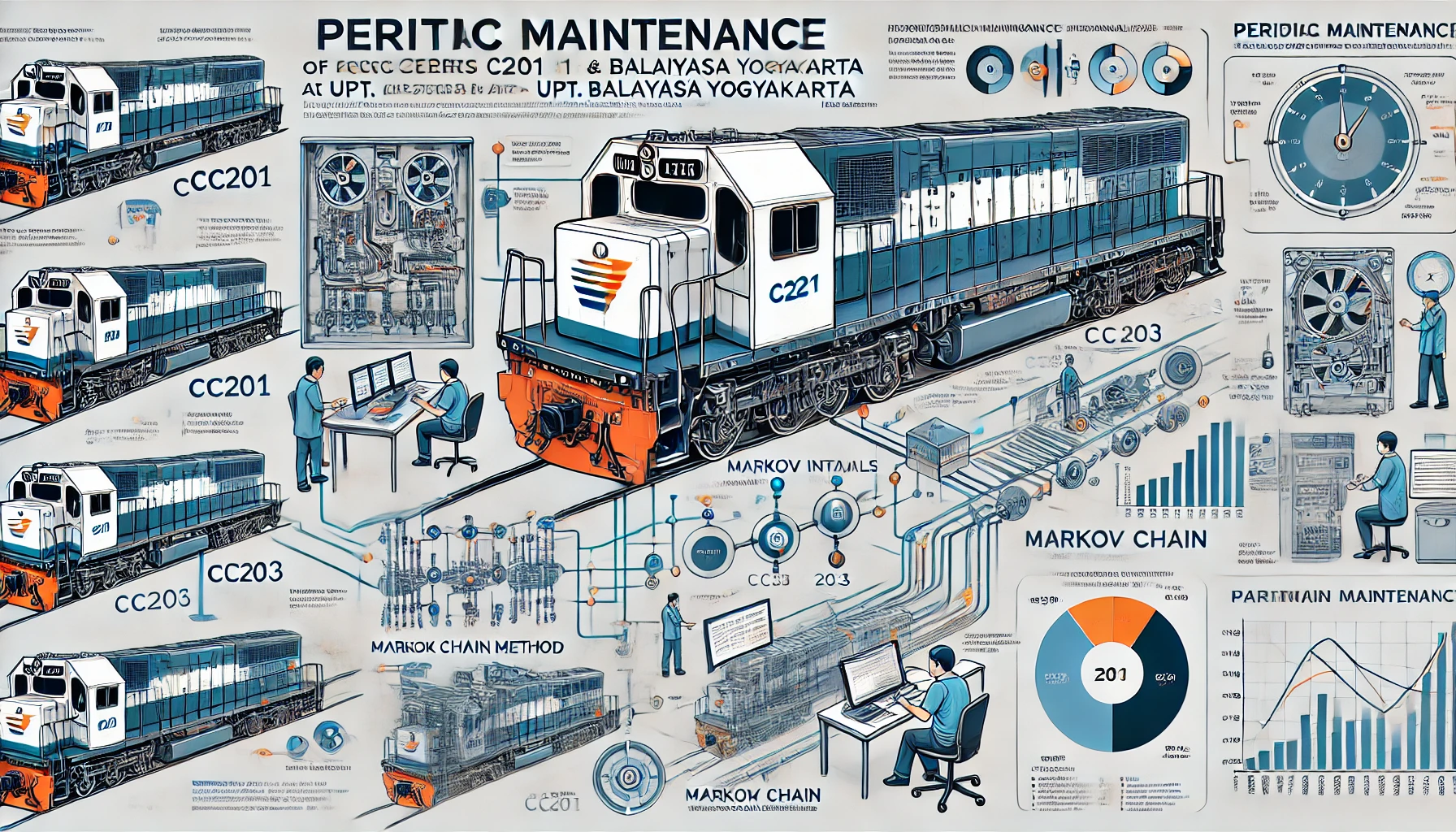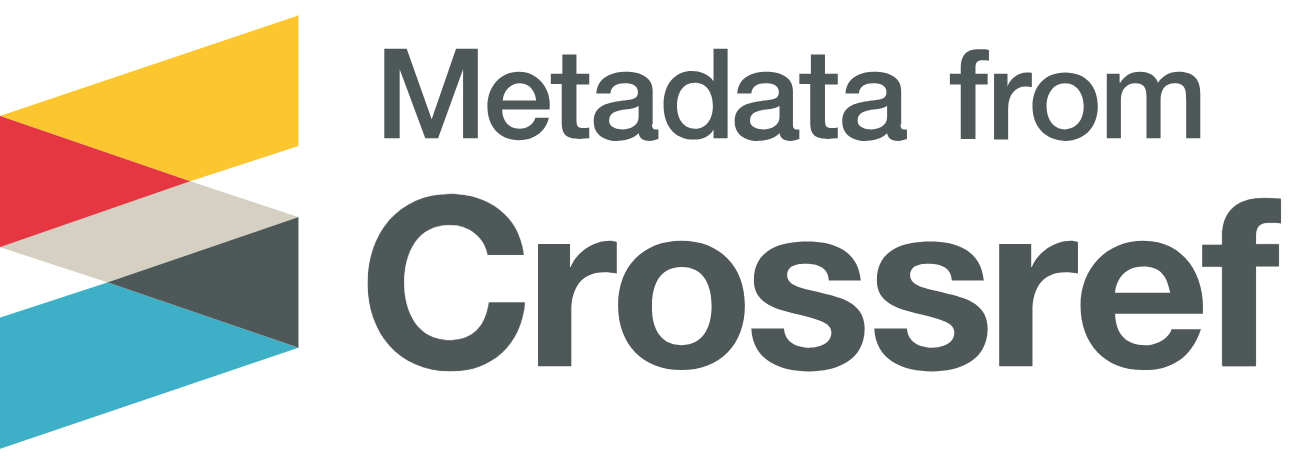Periodic Maintenance Analysis Of Locomotive Series CC201 And CC203 Using Markov Chain Method at UPT.Balaiyasa Yogyakarta
DOI:
https://doi.org/10.21831/jamat.v1i1.816Keywords:
Interval, Periodic Maintenance, Probability, Markov ChainAbstract
The objectives of this study are: (1) To get and provide the right periodic maintenance implementation time on CC201 locomotive maintenance. (2) To get and provide the right periodic maintenance implementation time on CC203 locomotive maintenance. The method used in this research is Markov Chain, using the type of applied research. This research uses a quantitative approach. The data collection techniques used are (1) Primary Data Collection; and (2) Secondary Data Collection. Meanwhile, the research instruments used (1) Observation Sheet; and (2) Documentation. The data analysis used is (1) Determination of Condition or State; (2) Creating a Transition Matrix; and (3) Steady State Analysis to get the probability of locomotive conditions in good condition, lightly damaged, moderately damaged or severely damaged. The results of this study show that: (1) The right periodic maintenance implementation time on CC201 locomotive maintenance is proposal II at interval P2 with the highest probability of good condition of 0.609 and the lowest probability of heavy condition of 0.021. With this, a maintenance scheduling policy is obtained for every 1 month to perform periodic maintenance on day 7,128. (2) The right periodic maintenance implementation time for CC203 locomotive maintenance is proposal II at interval P2 with the highest probability in good condition of 0.619 and the lowest probability in severe condition of 0.142. With this, a maintenance scheduling policy is obtained for every 1 month to perform periodic maintenance on day 24,516.
Downloads
References
[1] B. Mantoro, “The Importance of Transportation in Knitting Indonesia’s Diverse Communities Together,” KnE Social Sciences, Jan. 2021, doi: 10.18502/kss.v5i1.8297.
[2] P. Dwi and W. Oktama, “Nowcasting Jumlah Penumpang Kereta Api di Indonesia Menggunakan Indeks Google Trends (Nowcasting The Number of Train Passengers in Indonesia Using Google Trends Index),” 2021.
[3] S. A. Adisasmita, TRANSPORTASI DAN PENGEMBANGAN WILAYAH, 1st ed. Makasar: Graha Ilmu, 2011.
[4] M. SZKODA, G. KACZOR, R. PILCH, M. SMOLNIK, and Z. KONIECZEK, “Assessment of the influence of preventive maintenance on the reliability and availability indexes of diesel locomotives,” Transport Problems, vol. 16, no. 1, pp. 5–18, Mar. 2021, doi: 10.21307/tp-2021-001.
[5] J. A. P. Braga and A. R. Andrade, “Optimizing maintenance decisions in railway wheelsets: A Markov decision process approach,” Proc Inst Mech Eng O J Risk Reliab, vol. 233, no. 2, pp. 285–300, Apr. 2019, doi: 10.1177/1748006X18783403.
[6] F. Kusumawardana, “STRATEGI PEMELIHARAAN LOKOMOTIF DAN KERETA REL DIESEL (KRD) BERJANGKA DENGAN METODE MARKOV CHAIN UNTUK MEMINIMALKAN ANGGARAN MAINTENANCE,” Semarang, Aug. 2021.
[7] U. Sekaran and R. Bougie, Research Methods for Business, 7th ed. West Sussex: John Wiley & Sons, 2016. [Online]. Available: www.wileypluslearningspace.com
[8] J. W. Creswell, Research Design - Qualitative, Quantitative, and Mixed Methods Approaches, 4th ed. Californis: SAGE Publications, Inc., 2013.
[9] I. Irdianto, “PENGGUNAAN METODE MARKOV CHAIN DALAM PENJADWALAN PERAWATANMESIN UNTUK MEMINIMALKAN BIAYA KERUSAKAN MESIN DAN PERAWATAN MESIN MILL 303 DI PT. STEEL PIPE INDUSTRY OF INDONESIA UNIT 3,” vol. 2, no. 1, pp. 11–17, 2019, Accessed: Dec. 16, 2024. [Online]. Available: https://e-journal.umaha.ac.id/index.php/jiso/article/view/430/338
[10] A. Syakhroni, R. F. Adi Darmawan, and N. Marlyana, “Machine Maintenance Design using Markov Chain Method to Reduce Maintenance Costs,” International Journal of Education, Science, Technology, and Engineering (IJESTE), vol. 4, no. 1, pp. 39–58, Jun. 2021, doi: 10.36079/lamintang.ijeste-0401.224.

Downloads
Published
How to Cite
Issue
Section
License
Copyright (c) 2024 Journal of Automotive and Mechanical Applied Technology

This work is licensed under a Creative Commons Attribution 4.0 International License.








